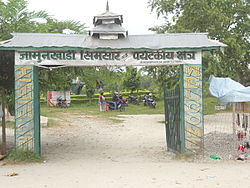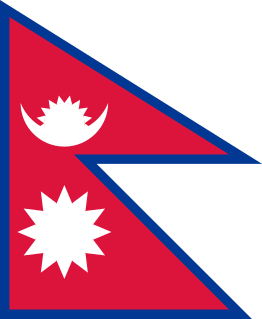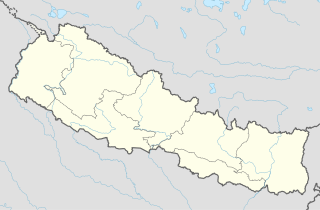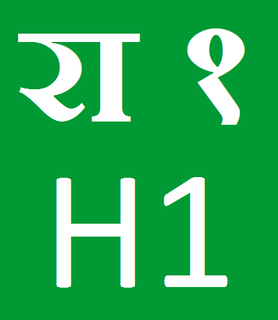This article needs additional citations for verification .(January 2016) (Learn how and when to remove this template message) |
Jamunkhadi Simsar | |
|---|---|
 Gate to wetlands area | |
| Coordinates: 26°31′N87°28′E / 26.52°N 87.47°E Coordinates: 26°31′N87°28′E / 26.52°N 87.47°E | |
| country | |
| zone | Mechi zone |
| District | Jhapa District |
The Jamunkhadi Simsar or Jamunkhadi Wetlands is a wetlands conservation project in the Kankai municipality of Jhapa District, in eastern Nepal.

Kankai Municipality is a municipality in Jhapa District of eastern Nepal.

Jhapa is one of 14 districts of Kirat of eastern Nepal. The latest official data, the 2011 Nepal Census, puts the total population of the district at 812,650.

Nepal, officially the Federal Democratic Republic of Nepal, is a landlocked country in South Asia. It is located mainly in the Himalayas but also includes parts of the Indo-Gangetic Plain. With an estimated population of 26.4 million, it is 48th largest country by population and 93rd largest country by area. It borders China in the north and India in the south, east, and west while Bangladesh is located within only 27 km (17 mi) of its southeastern tip and Bhutan is separated from it by the Indian state of Sikkim. Nepal has a diverse geography, including fertile plains, subalpine forested hills, and eight of the world's ten tallest mountains, including Mount Everest, the highest point on Earth. Kathmandu is the nation's capital and largest city. Nepal is a multiethnic nation with Nepali as the official language.
Contents
It was created to be developed as a tourist destination in Wards 2 and 5 of Surunga VDC (which are now the Dandagau area of Kankai), within the community forest. It lies about a kilometer away from the East-West Highway and occupies an area of about 10 hectares of the 25-hectare community forest. [1] Originally, it included two ponds named after the rivers Ganga (Ganges) and Jamuna, but due to lack of protection, Ganga no longer exists and currently only Jamuna remains.

Surunga is a trade center of Jhapa District. It is located in Kankai Municipality in Jhapa District in the Mechi Zone of south-eastern Nepal. At the time of the 1991 Nepal census it had a population of 16,747 people living in 2996 individual households. Surunga is one of the rapidly developing towns of Jhapa district. It is situated on the bank of the Kankai River.

Mahendra Highway, also called East-West Highway runs across the Terai geographical region of Nepal, from Mechinagar in the east to Bhim Datta in the west, cutting across the entire width of the country. It is the longest highway in Nepal and was constructed by CPWD/PWD Nepali and Indian engineers.

The Ganges, or Ganga, is a trans-boundary river of the Indian subcontinent which flows through the nations of India and Bangladesh. The 2,525 km (1,569 mi) river rises in the western Himalayas in the Indian state of Uttarakhand, and flows south and east through the Gangetic Plain of North India. After entering West Bengal, it divides into two rivers: the Hooghly and the Padma River. The Hooghly, or Adi Ganga, flows through several districts of West Bengal and into the Bay of Bengal near Sagar Island. The other, the Padma, also flows into and through Bangladesh, and joins the Meghna river which ultimately empties into the Bay of Bengal.
Jamuna pond is a tourist attraction. [2] [3] There is boating and fishing on the pond. Wild animals such as the python, bear, sambar, and porcupine are protected in this area.

Python is a genus of constricting snakes in the Pythonidae family native to the tropics and subtropics of the Eastern Hemisphere. Currently, 10 python species are recognized.

Bears are carnivoran mammals of the family Ursidae. They are classified as caniforms, or doglike carnivorans. Although only eight species of bears are extant, they are widespread, appearing in a wide variety of habitats throughout the Northern Hemisphere and partially in the Southern Hemisphere. Bears are found on the continents of North America, South America, Europe, and Asia. Common characteristics of modern bears include large bodies with stocky legs, long snouts, small rounded ears, shaggy hair, plantigrade paws with five nonretractile claws, and short tails.

The sambar is a large deer native to the Indian subcontinent, southern China, and Southeast Asia that is listed as Vulnerable on the IUCN Red List since 2008. Populations have declined substantially due to severe hunting, insurgency, and industrial exploitation of habitat.
















